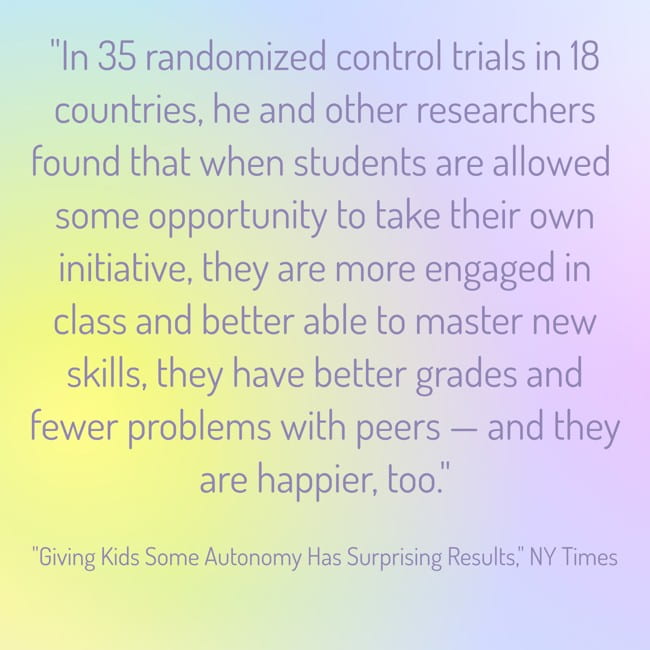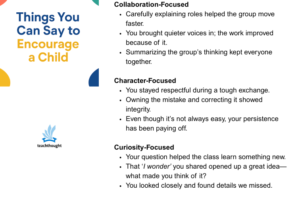
A Look Back: NY Times Column Identifies Important Problem – Lack Of Student Agency – But Falls Short On Context & Solutions
(I’m republishing my best posts from the first half of 2025. You can see the entire list of them here)
A column in today’s NY Times, Giving Kids Some Autonomy Has Surprising Results (it’s a gift link) does a decent job explaining the results of a recent Gallup poll of young people’s disengagement at school (you can read more about that poll at my previous post, Gallup Poll Finds K-12 Students Not Very Engaged In School) and correctly identifies lack of student agency as a cause.
However, it incorrectly describes it as THE cause of disengagement (without mentioning educational policy issues like lack of funding, fewer elective classes, classrooms bursting at the seams, school buildings falling apart, books being banned, topics like LGBTQ issues and systemic racism prohibited, overworked counselors – just to name a few), instead of just one cause of many.
Then, they offer solutions to the problem as one that teachers can fix by just changing the way they talk about their lessons. Yes, how teachers talk can make a difference in the classroom (see THE BEST RESOURCES SHARING RECOMMENDATIONS ABOUT “TEACHER TALK”), but I would bet dollars to donuts that not a whole lot of teachers actually talk in “controlling” ways to which they contrast their agency-enabling comments (though, to be fair, I do think some of their suggestions are good ones, though probably aren’t surprising to most teachers).
The authors fall into the trap that so many non-teachers (see sooooo many tech bros) who fall into when talking about education – that they have discovered THE problem in schools and now they can offer THE solution.
Yes, creating the conditions where student agency can flourish is one way schools can be better places for everyone. When I was a community organizer, we talked about how power was note a finite pie – if you have less, and others get more, the entire pie can get bigger and more opportunities can be created for everyone.
But that requires true student agency, where students actually have some power (see A Look Back: We Shouldn’t “Empower” Students – Instead We Should Create The Conditions Where They Can Take It) – asking for students suggestions and acting on them, encouraging genuine student choice, creating opportunities for students to become teachers. You can see more ideas at Six Ways For Students To Be Powerful In The Classroom – What Are More Ideas?
Even with these problems, I do think the column could be a useful one for teachers to read and discuss at faculty and department meetings. But only with acknowledging its shortcoming that lack of student agency is one of many problems facing schools. Fortunately, though, it is one that teachers can do something about.
I’d also accompany it with questions like:
Where do you have agency in your own life?
Where might students have agency, if they have it at all, in their lives?
What might be examples of fake student agency (where it just looks like they have power) and genuine student agency (when they have genuine power)?
What other questions do you think could be useful?
I’m adding this post to The Best Resources On Student Agency & How To Encourage It.
Source link




